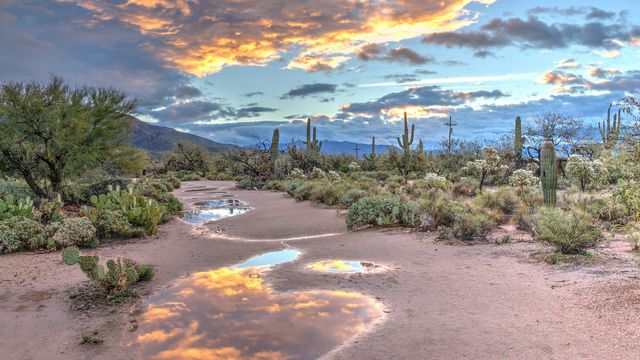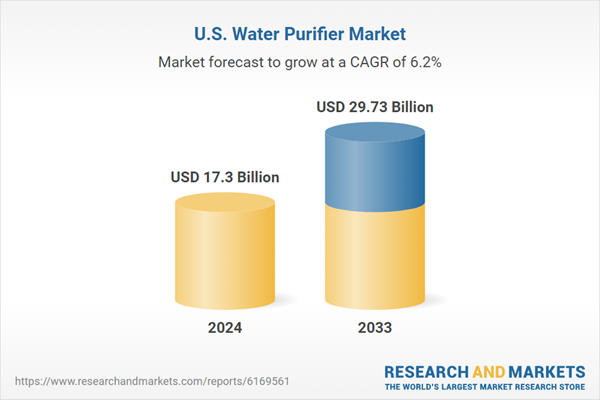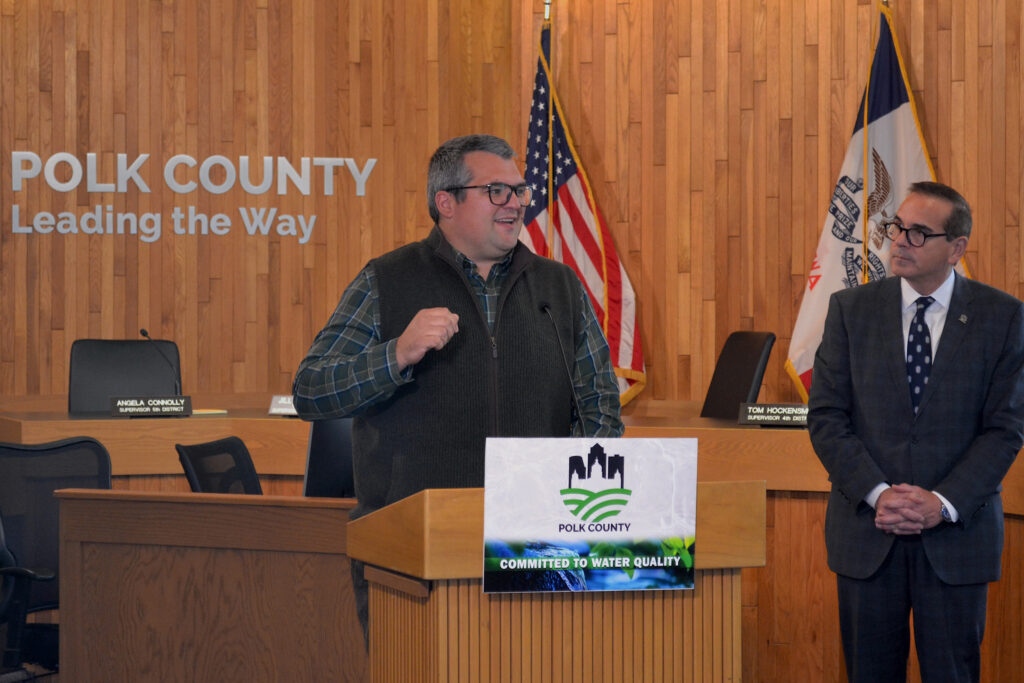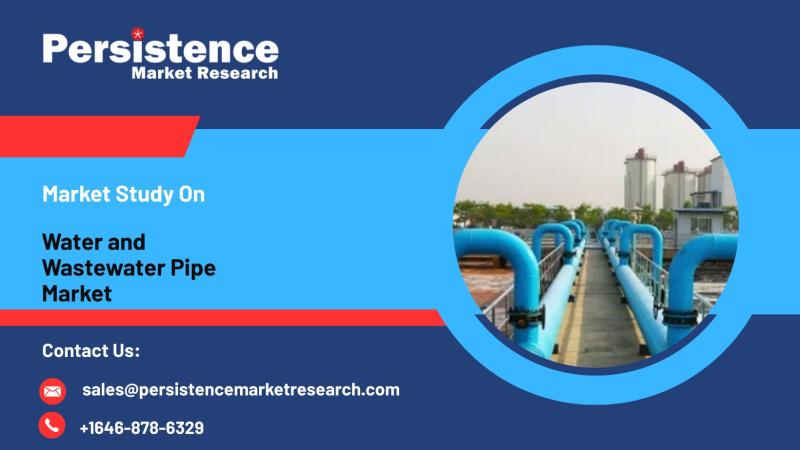Report on Anthropogenic vs. Climatic Impacts on Tucson’s Groundwater Resources
A Review of Findings in the Context of Sustainable Development Goals
A study led by University of Arizona researchers provides a multi-millennial reconstruction of the Tucson-area aquifers, offering critical data for assessing progress toward United Nations Sustainable Development Goals (SDGs), particularly SDG 6 (Clean Water and Sanitation), SDG 11 (Sustainable Cities and Communities), and SDG 13 (Climate Action). The research quantifies the severe impact of human activity on groundwater depletion compared to natural climate variability over the past 20,000 years.
Key Findings and Relevance to SDG 6: Clean Water and Sanitation
The study’s primary conclusion is that human-driven groundwater extraction has been the dominant factor in water table decline, directly challenging the objectives of SDG 6, which aims to ensure the availability and sustainable management of water for all.
Comparative Analysis of Water Table Drawdown
- Natural Fluctuation: Over millennia, during naturally dry climate periods, the water table dropped by a maximum of 105 feet (32 meters).
- Anthropogenic Impact: In contrast, groundwater pumping from the mid-20th century to the present caused a drawdown twice as severe as the largest natural climate-driven declines.
This stark comparison underscores a failure to adhere to SDG Target 6.4, which calls for ensuring sustainable freshwater withdrawals. The rate of depletion far exceeds the aquifer’s slow, natural recharge capacity, highlighting the unsustainable nature of past water management practices.
Advanced Methodologies for Water Resource Management
Researchers utilized advanced modeling techniques to analyze chemical and isotopic markers in groundwater, enabling them to:
- Reconstruct groundwater ages and historical recharge rates.
- Determine water table depths over thousands of years.
- Infer past climate conditions from the water’s composition.
These methods provide a comprehensive understanding of aquifer dynamics, a crucial component for implementing the integrated water resources management strategies promoted by SDG Target 6.5.
Historical Context and Implications for SDG 11: Sustainable Cities and Communities
The report traces the history of water use in the Tucson Basin, linking it directly to the region’s urban development and the long-term viability goals outlined in SDG 11.
Unsustainable Urban and Agricultural Growth
- Post-1940s Overdraft: Heavy groundwater pumping began in the 1940s to support irrigated agriculture and rapid population growth, leading to decades of overdraft with minimal regulation. This practice threatened the long-term resilience and sustainability of the community.
- Policy Intervention: The 1980 Groundwater Management Act and the 1992 introduction of Colorado River water via the Central Arizona Project marked significant steps toward sustainable management, aligning with SDG Target 11.b, which encourages integrated policies for resource efficiency and climate adaptation.
Future Strategies for Water Security and Climate Resilience
The study concludes that natural climate shifts, even toward wetter conditions, cannot restore the volume of groundwater extracted by humans. This finding places a significant emphasis on proactive and innovative water management to achieve SDG 13 (Climate Action) by building resilience to climate change and water scarcity.
The “One Water 2100” Plan: A Model for SDG Achievement
Tucson’s adoption of the “One Water 2100” master plan represents a forward-looking strategy that directly supports multiple SDGs. Key initiatives include:
- Enhanced Aquifer Recharge: The plan prioritizes the use of treated effluent and recycled wastewater to actively recharge the aquifer. By releasing this water into the Santa Cruz River, it seeps into the ground in locations known for modern recharge, maximizing its contribution to the water table.
- Integrated Water Management: This approach embodies the principles of a circular economy for water, contributing to the goals of SDG 6 (Clean Water and Sanitation) and enhancing the water security and resilience of the city, a core objective of SDG 11 (Sustainable Cities and Communities).
The research confirms that while conservation efforts have yielded partial recovery, long-term sustainability requires such deliberate, human-engineered solutions to supplement limited natural recharge and secure water resources for future generations.
Analysis of Sustainable Development Goals (SDGs) in the Article
1. Which SDGs are addressed or connected to the issues highlighted in the article?
-
SDG 6: Clean Water and Sanitation
This is the primary SDG addressed. The entire article focuses on the availability, sustainable management, and depletion of freshwater resources, specifically groundwater in the Tucson area. It discusses issues of water scarcity, overdraft from aquifers, and strategies for water conservation and recharge.
-
SDG 11: Sustainable Cities and Communities
The article centers on the water challenges faced by the city of Tucson and its surrounding basin due to a “rapidly growing population.” It highlights the city’s efforts to manage its water resources sustainably through plans like the “One Water 2100 plan,” which is a direct action toward making a human settlement more sustainable and resilient.
-
SDG 12: Responsible Consumption and Production
The article implicitly addresses this goal by detailing the consequences of unsustainable consumption patterns. The “decades of groundwater pumping” for “irrigated farming and a rapidly growing population” represent unsustainable consumption of a natural resource. The shift towards conservation, regulation (Groundwater Management Act), and use of recycled water reflects a move towards more responsible consumption.
-
SDG 13: Climate Action
The study explicitly compares the impact of human activities to that of “natural climate variation” on groundwater levels. It uses past climate data to understand aquifer recharge and helps “water resource managers anticipate how aquifers might react to future changes,” which is crucial for climate change adaptation and building resilience in water management.
2. What specific targets under those SDGs can be identified based on the article’s content?
-
Under SDG 6 (Clean Water and Sanitation):
- Target 6.4: “By 2030, substantially increase water-use efficiency across all sectors and ensure sustainable withdrawals and supply of freshwater to address water scarcity…” The article directly discusses the history of unsustainable withdrawals (“overdraft and well failures”) and the implementation of measures like the “1980 Groundwater Management Act” and conservation efforts to manage the supply of freshwater sustainably.
- Target 6.3: “By 2030, improve water quality… by substantially increasing recycling and safe reuse globally.” The article highlights Tucson’s “One Water 2100 plan,” which includes the “expanding use of treated effluent” and “releasing the recycled wastewater” to recharge the aquifer, directly aligning with this target.
- Target 6.5: “By 2030, implement integrated water resources management at all levels…” The article mentions several examples of integrated management, including the statewide “1980 Groundwater Management Act,” the use of Colorado River water via the “Central Arizona Project,” and the city-level “One Water 2100 plan.”
-
Under SDG 11 (Sustainable Cities and Communities):
- Target 11.b: “…substantially increase the number of cities and human settlements adopting and implementing integrated policies and plans towards… resource efficiency, mitigation and adaptation to climate change…” The “One Water 2100 plan” is a clear example of an integrated city-level plan aimed at resource (water) efficiency and adapting to long-term water availability challenges.
-
Under SDG 12 (Responsible Consumption and Production):
- Target 12.2: “By 2030, achieve the sustainable management and efficient use of natural resources.” The core conflict described in the article is the unsustainable use of groundwater versus the need for sustainable management. The study’s conclusion that “we could not recover the amount of groundwater that we’ve removed” underscores the importance of achieving this target.
-
Under SDG 13 (Climate Action):
- Target 13.1: “Strengthen resilience and adaptive capacity to climate-related hazards and natural disasters in all countries.” The study provides data to “anticipate how aquifers might react to future changes, whether natural or driven by humans.” This knowledge strengthens the adaptive capacity of Tucson’s water managers to handle climate-related impacts on water availability.
3. Are there any indicators mentioned or implied in the article that can be used to measure progress towards the identified targets?
-
For Target 6.4 (Sustainable Withdrawals):
- Indicator Mentioned: The depth of the water table. The article quantifies the historical drop, stating that natural climate variation caused a drop of “as much as 105 feet (32 meters),” while “modern pumping… caused twice the drawdown.” Monitoring the water table level over time is a direct indicator of withdrawal sustainability.
- Indicator Implied: Level of water stress. The entire study is an analysis of water stress, comparing human withdrawals to natural recharge rates. The conclusion that “recharge is slow and limited” is a qualitative assessment of high water stress.
-
For Target 6.3 (Water Recycling):
- Indicator Implied: The volume of treated wastewater reused. The article mentions the “One Water 2100 plan” which calls for “continuing and expanding use of treated effluent.” Measuring the amount of recycled wastewater used for aquifer recharge would be a key indicator of progress.
-
For Target 12.2 (Sustainable Resource Management):
- Indicator Mentioned: Groundwater withdrawal volumes. The article discusses the history of “heavy” pumping starting in the 1940s and the subsequent overdraft. Tracking the volume of groundwater pumped annually against the calculated sustainable yield or recharge rate is a direct indicator.
-
For Target 11.b and 13.1 (Integrated Plans and Adaptation):
- Indicator Mentioned: The existence and implementation of local water management and adaptation plans. The article explicitly names the “1980 Groundwater Management Act” and the “One Water 2100 plan” as formal strategies being implemented, which serves as a qualitative indicator of progress.
4. Summary Table of SDGs, Targets, and Indicators
| SDGs | Targets | Indicators |
|---|---|---|
| SDG 6: Clean Water and Sanitation |
6.4: Ensure sustainable withdrawals and supply of freshwater.
6.3: Substantially increase recycling and safe reuse. 6.5: Implement integrated water resources management. |
– Water table depth (mentioned as having dropped by twice the amount of natural variation due to pumping). – Level of water stress (implied by comparing slow recharge rates to heavy withdrawals). – Volume of treated wastewater reused for aquifer recharge (implied through the “One Water 2100 plan”). – Existence of management plans like the “Groundwater Management Act” (mentioned). |
| SDG 11: Sustainable Cities and Communities | 11.b: Increase the number of cities adopting integrated policies for resource efficiency and climate adaptation. | – Adoption and implementation of a local integrated water plan (mentioned as the “One Water 2100 plan”). |
| SDG 12: Responsible Consumption and Production | 12.2: Achieve the sustainable management and efficient use of natural resources. | – Groundwater withdrawal volumes (implied by the history of “heavy pumping” and “overdraft”). |
| SDG 13: Climate Action | 13.1: Strengthen resilience and adaptive capacity to climate-related hazards. |
– Use of climate and hydrological data to inform water management (the core purpose of the study). – Implementation of local adaptation plans (mentioned as the “One Water 2100 plan”). |
Source: technologynetworks.com







